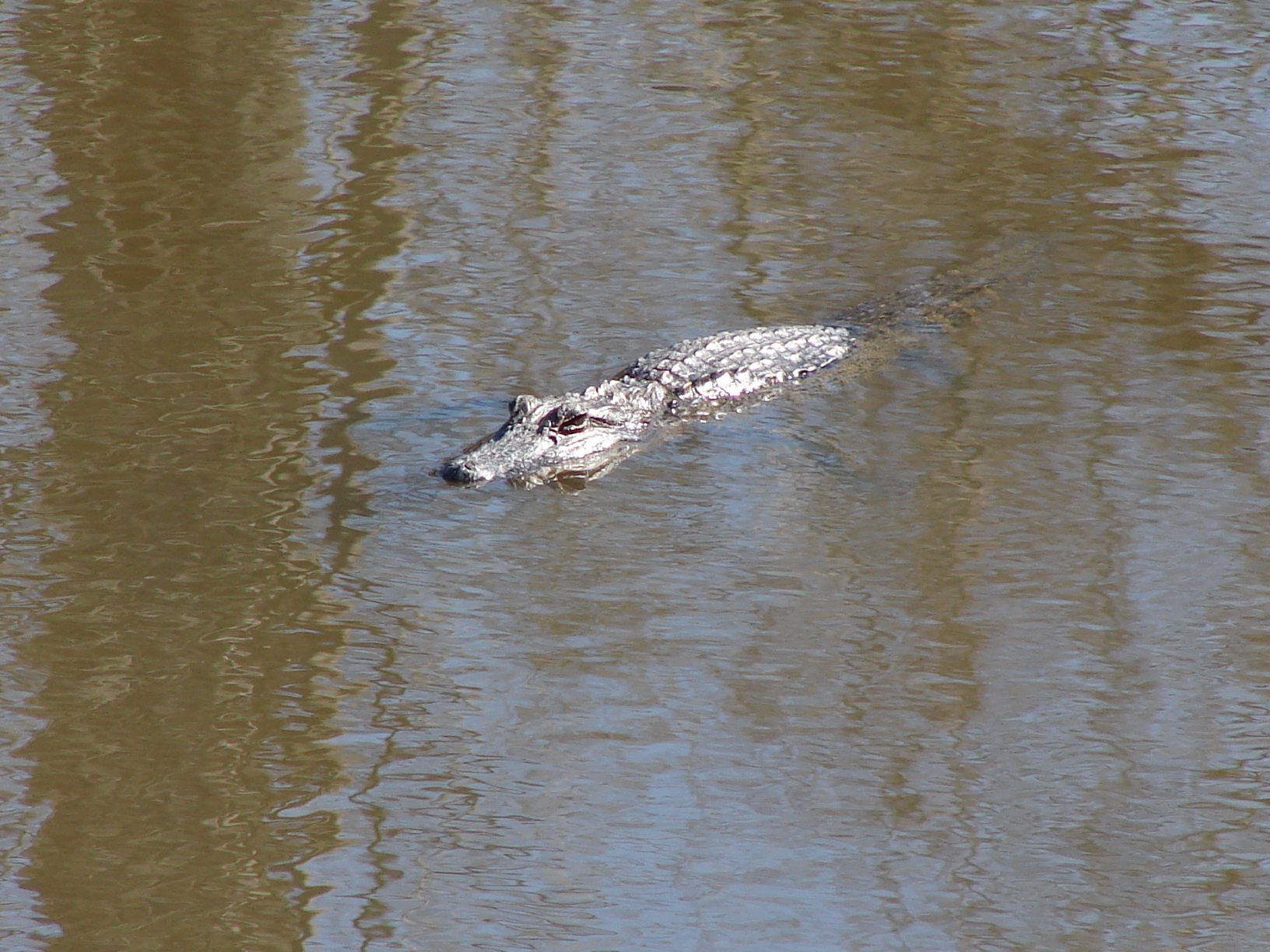 It was clear that a Cajun man who’d lived his whole life in South Louisiana had a better eye for spotting wildlife in a swamp than I did. “Look, there’s a barred owl, up in that tree,” he said, pointing while cutting the motor on the shallow-bottomed fishing skiff via which we were navigating the edge of Lake Martin.
It was clear that a Cajun man who’d lived his whole life in South Louisiana had a better eye for spotting wildlife in a swamp than I did. “Look, there’s a barred owl, up in that tree,” he said, pointing while cutting the motor on the shallow-bottomed fishing skiff via which we were navigating the edge of Lake Martin.
Finally I spied it, blending in perfectly with the muted brown bark and gray strands of Spanish moss dangling from the branches of the cypress tree. She sat motionless, her newly hatched babies nesting in the hollowed-out top of an adjacent cypress trunk.
It was the same way with alligators: Bryan Champagne, our guide, saw them instantly, resting in the reeds and atop the undulating green marsh mat. A few seconds later, they materialized before my eyes as well. Sometimes just a golden eye was visible through the thick grass, another time we saw a whole mass of baby alligators — yearlings, Bryan said, though only 10 inches long.
We spent two hours drifting through the swamp, eyeing lots of gators, turtles, snakes, herons, egrets, a bald eagle, and cute, fuzzy nutria – which are actually big semi-aquatic rats imported for fur farming in the 1930s that managed to escape and create an over-population problem in some areas of Louisiana’s wetlands.
Traveling by boat through a swamp was an intensely sensory experience: the still black water, colored by tannin, rippling with swimming creatures; the moss-festooned trees singing with birds; the early spring air damp and pungent with decaying leaves and growing grass.
Typically my nature travel tends toward mountains and high deserts, with some tropical beach and reef environs for good measure. After last week, however, I’m expanding my list of “must-see natural habitats” to include more of the world’s amazing swamps.
High on my travel bucket list is Botswana’s Okavango Delta, where guided trips by poled mokoro (local dugout canoe) take visitors on a water-based safari amid channels and marshes teeming with big game and hundreds of species of birds. Right up there, too, is the Pantanal, the world’s largest wetlands sprawling over 54,000 square miles of Brazil. Seasonal floods submerge 80 percent of the Pantanal, creating a rich life-support system for an astonishing diverse array of wildlife. I’d also like to explore the shadowy lagoons of Costa Rica’s Tortuguero National Park, a key nesting site for many of the world’s most endangered species of sea turtles.
Have you got any swamp stories to share? Wet wonderlands you’d recommend others discover? Tips to help protect the world’s diminishing marshes? Leave a comment here, I’d love to hear from you.



























